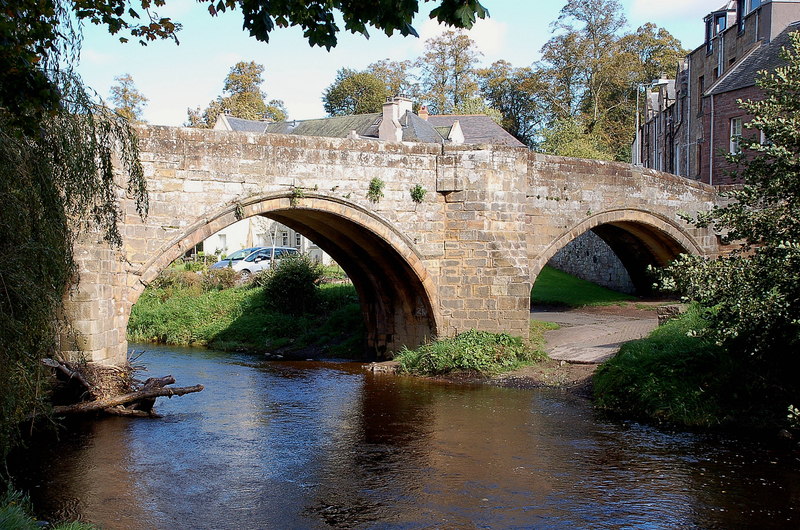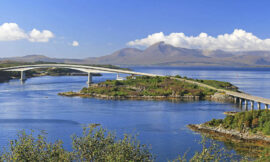The Canongate Bridge in Jedburgh is a notable historical landmark that spans the Jed Water in the Scottish Borders town of Jedburgh. This charming bridge, with its distinctive architectural features and rich history, reflects the town’s medieval heritage and serves as a reminder of its strategic importance throughout the centuries.
Historical Background
Jedburgh is a town steeped in history, with roots dating back to the early medieval period. The town was an important ecclesiastical center, housing the magnificent Jedburgh Abbey, founded in the 12th century by David I of Scotland. The Canongate Bridge itself has played a significant role in the town’s history, providing a vital crossing point over the Jed Water.
Architectural Features
The Canongate Bridge is an arched stone bridge, a common design for medieval bridges due to its strength and durability. The exact date of its construction is not well-documented, but it is believed to have been built in the 16th century, during a time when Jedburgh was thriving as a market town and a center for religious activity.
The bridge features multiple arches, which are elegantly proportioned and constructed with locally sourced stone. The craftsmanship of the stone masonry is evident in the precise fitting of the stones and the robustness of the structure, which has stood the test of time and continues to carry traffic to this day.
Historical Significance
Throughout its history, the Canongate Bridge has witnessed significant events and changes in the town of Jedburgh. During the turbulent times of the Border Reivers in the late medieval and early modern periods, the bridge would have been a critical route for both raiders and defenders. Its strategic location made it a focal point for the movement of people and goods, as well as for military activity.
In the 18th and 19th centuries, as Jedburgh evolved and expanded, the Canongate Bridge continued to be a key infrastructure element, facilitating trade and communication within the region. The bridge’s resilience and enduring presence highlight its importance in the daily life and historical narrative of Jedburgh.
Modern-Day Context
Today, the Canongate Bridge remains an important and functional part of Jedburgh’s infrastructure. It is used by both pedestrians and vehicles, maintaining its role as a vital crossing point over the Jed Water. The bridge also serves as a scenic spot for visitors to the town, offering picturesque views of the river and the surrounding landscape.
The bridge is often included in historical tours of Jedburgh, allowing visitors to appreciate its architectural beauty and historical context. Nearby attractions, such as Jedburgh Abbey and the Mary Queen of Scots’ House, provide further insights into the rich history of the area, making the bridge a part of a broader historical experience.
Preservation and Legacy
Efforts have been made to preserve the Canongate Bridge as an important heritage site. Its maintenance is crucial not only for its continued use but also for the preservation of Jedburgh’s historical landscape. As an enduring symbol of the town’s past, the bridge is a testament to the skilled craftsmanship and engineering of its builders.
In conclusion, the Canongate Bridge in Jedburgh is more than just a functional piece of infrastructure; it is a historical monument that encapsulates the town’s rich heritage and its enduring spirit. Its architectural elegance, historical significance, and continued relevance make it a cherished landmark for both locals and visitors alike.



